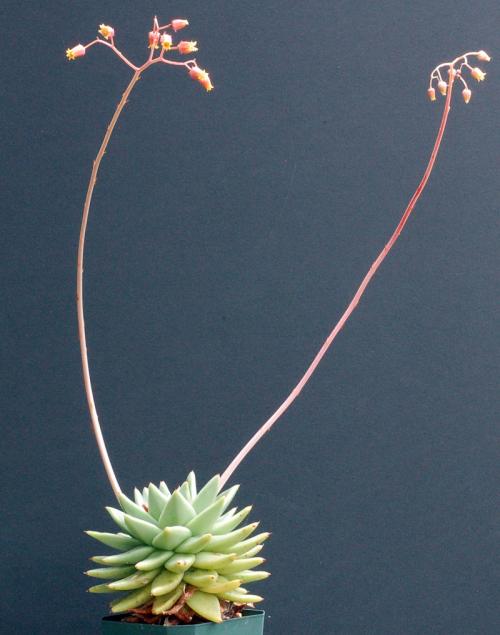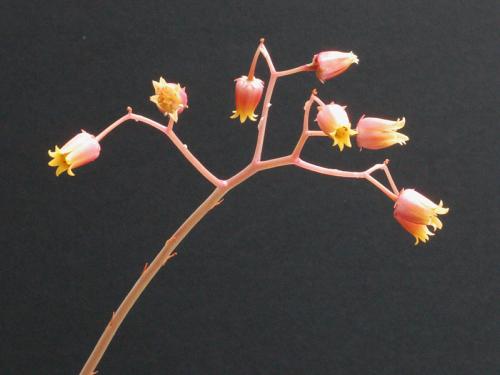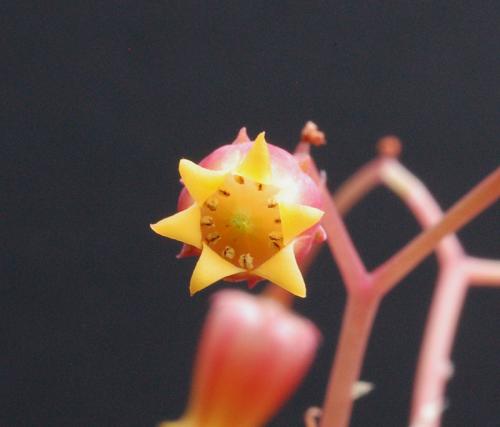AGAVOIDES 'Corderoyi' (Morren) Kimnach, 1998 (engl./ fr.)
Synonyms :
Cotyledon corderoyi Baker (1874) / Echeveria corderoyi (Baker) E. Morren (1874) / Urbinia corderoyi (Baker) Rose (1903) / Echeveria agavoides var. corderoyi (Baker) von Poellnitz (1936)
Etymology : Named for Justus Corderoy who had grown the plant.
Type : Cultivated by J. Corderoy, 4/74.
Distribution : No known locality in the wild.
Description as Cotyledon corderoyi by Baker in The Gardeners' Chronicle & Agricultural Gazette, new ser.1: 599. 1874 :
Glabrous, acaulescent.
Leaves 60 – 70 in a dense rosette 7 to 8 inches broad and 3 to 4 inches deep, ovate, 2 to 2.5 inches long, 1.25 to 1.5 inch broad at the middle, half an inch thick, quite flat on the face in the upper half, rounded on the back, produced into a firm lanceolate mucro, both sides a very pale whitish-green, smooth and rather shining.
Flower-stems 3 – 4 to a rosette, the scape below the cyme 15 to 18 inches long, terete, with only a few minute, scariose, bract-like leaves; cyme trichotomous, with 15 – 20 flowers on long red flexuose branches, bracts minute, lanceolate, pedicels 0.5 to 0.75 inch long, bright red.
Flowers : Calyx rotate, 0.25 inch broad, with lanceolate divisions (= sepals) reaching quite down to the pedicel, corolla urceolate, 3/8 inch long, bright red at the base, yellow upwards ; the lanceolate divisions three times as long as the campanulate tube.
Note :
1. Baker received this plant from Justus Corderoy, a succulent collector from Blewbury, England, who for his part had got it some years previously from Belgium. It differs from the type species by
- a much larger number of leaves
- which are much narrower and flat,
- an inflorescence which is triple branching,
- more numerous and smaller flowers
- and sepals not united at the base.
2. Walther's text about E. agavoides ‘Corderoyi’ (Echeveria, 85, 1972) is full of inaccuracies and contradictions, therefore of no use at all.
3. The plant distributed as ISI 322 in 1960 was not E. agavoides 'Corderoyi' but E. agavoides ‘Multifida’.
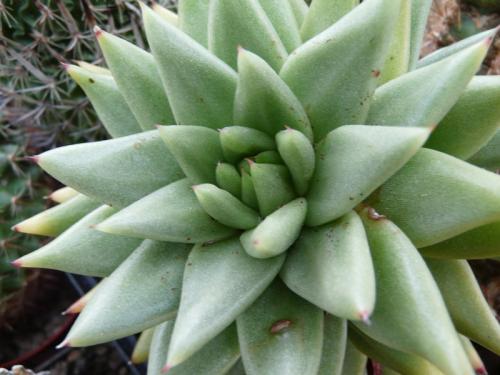
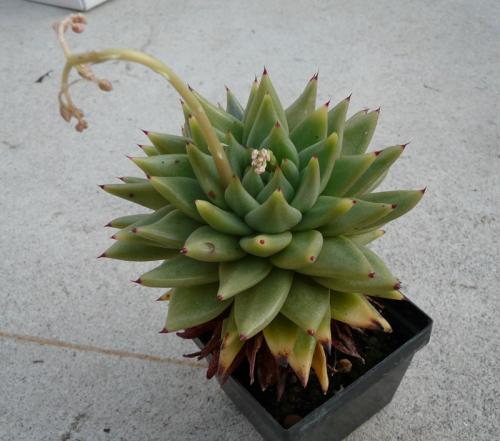
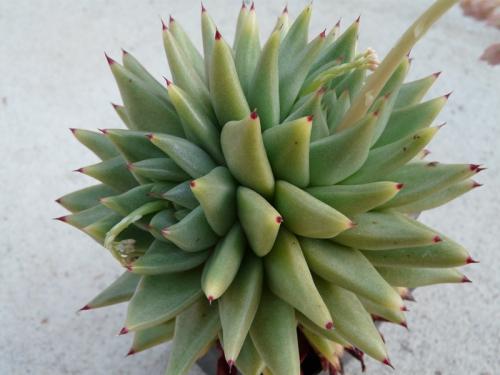
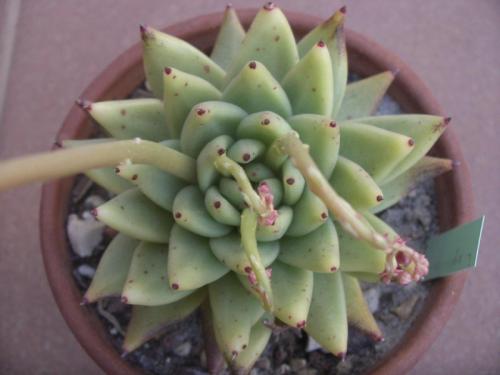
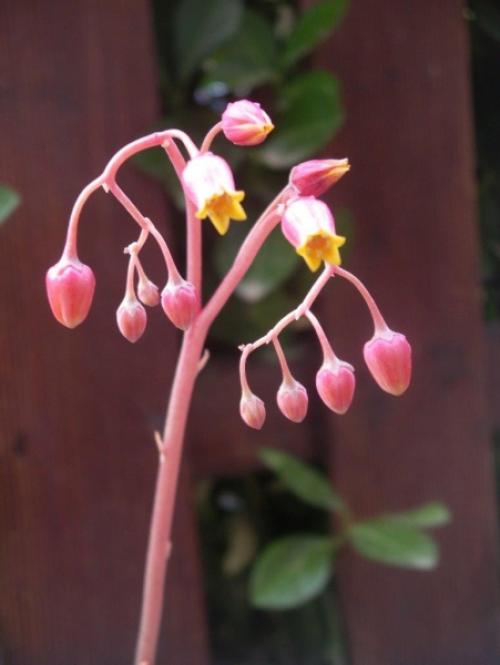
It is doubtful whether the photos below are correct for E. agavoides 'Corderoyi' because the sepals are clearly united at the base and - moreover - all flowers are 6-partite.
